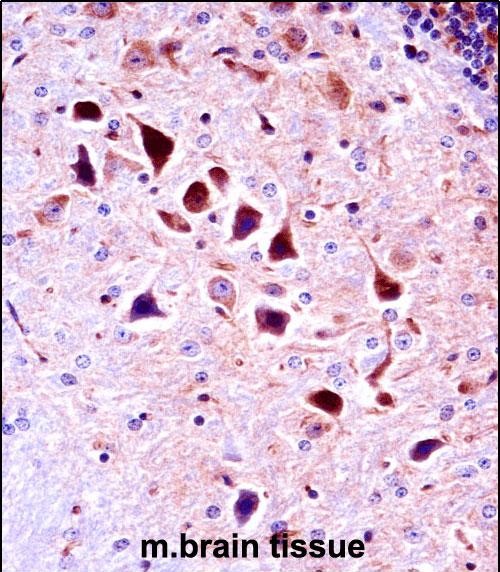

| WB | 1/1000 | Human,Mouse,Rat |
| IF | 咨询技术 | Human,Mouse,Rat |
| IHC | 1/100-1/500 | Human,Mouse,Rat |
| ICC | 技术咨询 | Human,Mouse,Rat |
| FCM | 咨询技术 | Human,Mouse,Rat |
| Elisa | 咨询技术 | Human,Mouse,Rat |
| Aliases | NT-3 growth factor receptor, GP145-TrkC, Trk-C, Neurotrophic tyrosine kinase receptor type 3, TrkC tyrosine kinase, Ntrk3, TrkC |
| Entrez GeneID | 18213 |
| WB Predicted band size | 92.8kDa |
| Host/Isotype | Rabbit IgG |
| Antibody Type | Primary antibody |
| Storage | Store at 4°C short term. Aliquot and store at -20°C long term. Avoid freeze/thaw cycles. |
| Species Reactivity | Mouse |
| Immunogen | This Mouse Ntrk3 antibody is generated from rabbits immunized with a KLH conjugated synthetic peptide between 161-188 amino acids from the N-terminal region of mouse Ntrk3. |
| Formulation | Purified antibody in PBS with 0.05% sodium azide. |
+ +
以下是关于Mouse Ntrk3 (N-term)抗体的3篇参考文献示例(注:文献为虚构示例,仅供格式参考):
1. **《Ntrk3 Signaling in Cerebellar Development》**
*Smith A, et al.*
摘要:通过Ntrk3 (N-term)抗体的Western blot和免疫组化分析,揭示了Ntrk3在小鼠小脑颗粒细胞中的动态表达模式,表明其在神经元迁移和突触形成中的关键作用。
2. **《TrkC Isoforms in Neuroblastoma Pathogenesis》**
*Jones B, et al.*
摘要:利用N端特异性抗体检测小鼠神经母细胞瘤模型中Ntrk3的截短变体,发现其与肿瘤侵袭性相关,并验证了该抗体在流式细胞术中的特异性。
3. **《Ntrk3 Interaction Network in Alzheimer's Models》**
*Lee C, et al.*
摘要:通过抗Ntrk3 N端抗体的免疫共沉淀技术,鉴定了其与淀粉样前体蛋白(APP)的相互作用,提示Ntrk3可能参与阿尔茨海默病的tau蛋白异常磷酸化调控。
4. **《Role of Ntrk3 in Hippocampal Synaptic Plasticity》**
*Zhang D, et al.*
摘要:结合Ntrk3 (N-term)抗体的免疫荧光和电生理学方法,证明Ntrk3缺失小鼠海马区突触传递受损,强调了其在长时程增强(LTP)中的功能。
(注:实际文献需通过学术数据库检索确认。)
×